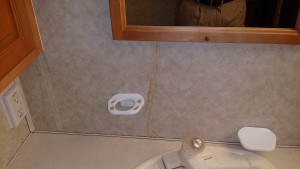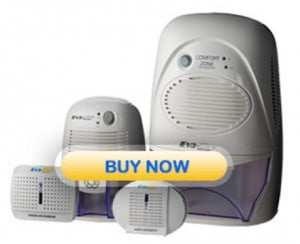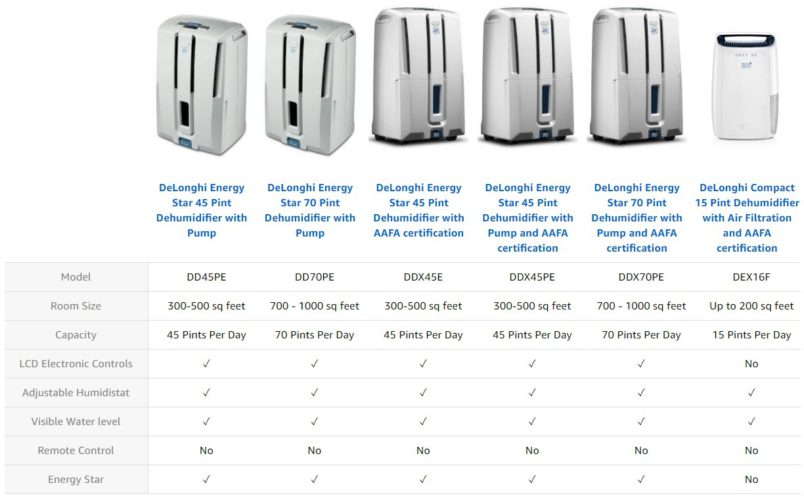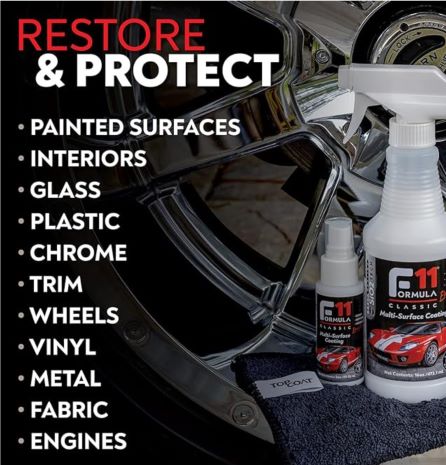
Bathroom Wall Stains Due to Excess Humidity
One of the biggest invisible problems that come with living in an RV full time is moisture in the air! Pam and I measure our interior and outdoor humidity levels, and we have discovered that we can not live without an RV dehumidifier! And since we live in a small RV we use an Eva-Dry Dehumidifier.
When humidity levels are high, nothing dries! When things do not dry the chances for mold to start to form increases.
This past summer we were traveling in the northeast. It was a cold, rainy summer, and humidity levels were high. We were not able to run the air conditioning very much because it was so cool most days. Our closet area is pretty tightly packed, and it is located on a slide out of its own. Because of the tight-packed closet and the cool exterior walls, moisture formed inside of the closet. So much so that at times the interior walls were wet.
When it is hot and humid, the AC unit can help remove that moisture from the air. But, when it is cool out, or it is winter time in the south, there must be another way to get the moisture out of the air!
When moist air condenses on interior walls of the RV and seeps between joints, it can cause severe damage to an RV’s structural integrity. Because of regular showering and cooking in the RV it is possible to get rampant mold fungus to grow without even realizing that this is occurring. That plus living in humid climates makes this situation one of the most damaging conditions to an RV!
Even the ventilation systems that are installed in RV’s are not able to combat the unique circulation issues RV’s have. With all the small nooks and cranny’s that exist to maximize storage space, these areas create particularly difficult challenges when it comes to moisture problems. Air movement is just not able to get to these areas. A more aggressive method is needed to control moisture buildup in these areas!
When humidity levels are at fifty-five percent or more, airborne allergens such as mold spores, bacteria, and dust mites thrive and multiply very quickly. To keep mold and mildew at bay in an RV, humidity levels must be kept below fifty percent. If that can be done, most of these issues can be kept at bay!
It can take only fourteen to sixteen hours of humidity levels above fifty-five percent to allow mold to start to form. As an RV inspector, I would have to say the majority of the RV’s I step into that are at least a few years old have some issue with mold. You can smell it when you walk inside!
As I mentioned earlier, when an RV’s air conditioner is running it is helping to remove excess moisture from the air. But what about the times it is not being used: during seasonal changes and times when it is cooler outside while traveling from state to state or climate to climate, during the evening hours, or any location in the United States other than the warmer southern states?
How About Using an RV Dehumidifier?
What type of options are available given the small space we are talking about. Most dehumidifiers that can be purchased at a home improvement store or online are big, expensive, noisy and put out a lot of heat due to the onboard compressor. We tried using a freestanding compressor style unit in our previous RV, and the main issues we had were the amount of space it took up due to the need for air flow, the amount of heat it produced, and it made so much noise that we could not stand it!
The chemical dehumidifier options sold in bucket containers that are designed to be placed in drawers and closets can be dangerous. If they get knocked over the product inside can be dangerous as it is toxic and corrosive. Handling this material requires care! These type of solutions are also a regular expense as they cannot be reused and must be replaced.
What’s the Best Type of RV Dehumidifier for an RV?
The best dehumidifier system for an RV will be:
- Small and fully contained.
- Spill-proof.
- Non-toxic and non-corrosive.
- Renewable, reducing both waste and expense.
We Love Our Eva-Dry Dehumidifier!
Since Pam and I have a smaller RV that we enjoy living the full time RV lifestyle in, we use the Eva-Dry 2200 Electric Dehumidifier. Its ability to remove excess moisture in the air for 2,200 cubic feet of space works perfectly for our RV. There is a larger model that works in areas of 4,000 cubic feet, but this was not needed for our class C RV. It would be more suitable for a larger Class A RV.
We use a wireless remote sensor and an indoor sensor with readout to measure humidity levels both inside and outside the RV. Whenever we are unable to use our roof air conditioner unit, we use an Eva-Dry 2200 dehumidifier to help keep humidity levels down. The only part of the country we have traveled to where we have not had a need for such a device was in the mountainous regions of the west and the desert areas of the southwest.
Fact: if you are not running your air conditioner unit in your RV, then you need to do something else to manage moisture levels in the air. You need to measure those levels and have a method to lower humidity in your RV, or you may create several problems. The two most important would be the health risk caused by the effects of high humidity in the RV and the damage that the humidity can cause to the RV!
Fall 2018 Update:
Since we changed our full time RV living home back in July of 2018 to a larger unit, we needed to make a change of dehumidifier units. As good as the Eva Dry was it is not powerful enough for our new RV, Missy Tiffy, a Tiffin Allegro Open Road Class A RV.
So, after much research into an appropriate unit for a thirty-eight foot RV, it was decided that the Delonghi DDX45E unit would meet our needs based on previous experience with dehumidifiers. I found a good website that helped with our research. It laid out all the types that would be appropriate for an RV. After spending time with all the options the Delonghi was the best choice for us!
Delonghi dehumidifiers are well made by current standards and manufactured in Italy. They are more expensive than others because they are made in Italy and not in China. The unit runs at about 52 decibels on regular fan mode. For the range of the models in the Delonghi lineup, the DDX45E is determined to be the best value.
We have been using the unit for a few weeks and find it to be very adequate. We had some cold temperatures in the thirties prior to receiving the unit and we had moisture-soaked windows that took most of the day to go away, even with wiping them with a towel several times. There was just too much moisture in the inside air.
Last night we were around freezing, and with the Delonghi in use, we were dry as a bone this morning. It removes more moisture from the air than I have seen in any dehumidifier that we have owned so far. I had looked at the Delonghi’s back in 2012 when we had our big 5th wheel but purchased a Frigidaire unit because of the lower price. The DDX45E is quieter and more efficient in removing moisture than the Frigidaire, and certainly more so than the Eva Dry. But that is expected as it uses a different technology.
So, keep your RV dry by purchasing a dehumidifier! Happy RVing!!
This post is powered by Grammarly











2 comments
Great blog post. Which manufacturer would you recommend the most? I’m looking for best dehumidifier for bathroom…
Author
If this is for an RV bathroom, definitely the Eva-Dry because of space limitations. You can also get a little container of damp rid and set it by the toilet to assist in removing moisture from the air.